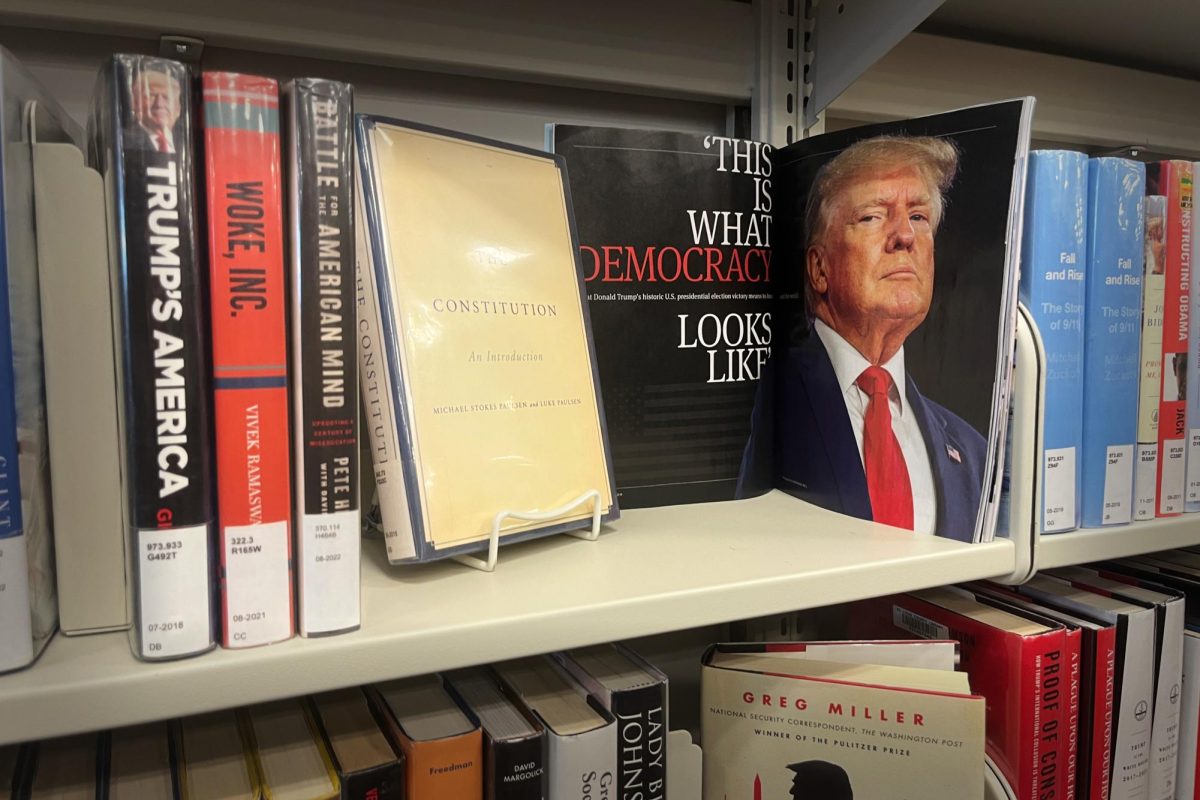With tensions continuing to rise on a dangerous scale, it becomes a greater question as to what should be done about the Democratic People’s Republic of Korea, or, North Korea. Since becoming an international power of nuclear energy, North Korea has exemplified extremely provocative and questionable behavior towards South Korea and the United States, including a recent list of threats that has implications of hostility.
North Koreas history with nuclear energy dates all the way back to 1957, when its nuclear program began. Following the Korean War and despite concern from other countries, the United Nations reached an agreement to allow the introduction of nuclear weapons in Korea after the U.S. Chairman of the Joint Chiefs of Staff Admiral Radford told the U.S. Department of State that the U.S. military’s intention was to introduce atomic weapons into Korea. This decision completely disregards paragraph 13(d) of the Korean Armistice Agreement, which mandates that both sides should not introduce new types of weapons into Korea. North Korea then denounced the abrogation of paragraph 13(d) as an attempt to wreck the armistice agreement and turn Korea into a U.S. atomic war zone. In January of 1958, the United States shipped nuclear-armed Honest John and Matador missiles and 280mm atomic cannons to South Korea with ranges that were capable of reaching China and the Soviet Union.
In the midst of the Cold War, the intentions of the United States are very clear here: to establish an outpost in East Asia with nuclear weapons in order to intimidate other nuclear active nations. While this decision appears to be necessary to prevent nuclear destruction, it also fueled a military response from North Korea, which included the construction of massive underground fortifications that were resistant to nuclear attack, as well as a peaceful nuclear energy program that was started by the Soviet Union despite North Korean attempts to gain information on how to develop nuclear weapons. Unable to gain the information, North Korea moved forward with its peaceful nuclear energy program and cut its ties with the U.S.S.R. following the Cuban Missile Crisis, as the Soviets betrayed Fidel Castro.
In February of 1992, The Joint Declaration on the denuclearization of the Korean Peninsula came into effect, which banned the testing, manufacturing, possession and use of nuclear weapons. North Korea then refused to permit the International Atomic Energy Agency (IAEA) access to two suspected nuclear waste sites. In response, the U.N. Security Council passed a joint resolution, recommending that North Korea cooperate with the IAEA. An Agreed Framework was established, demanding that both South and North Korea work together to strengthen the international nuclear non-proliferation regime (NPT) and make all of Korea a nuclear free zone.
Both sides cooperated until January of 2003, when North Korea withdrew from the NPT, stating that the IAEA is ‘used as a tool for executing the US hostile policy toward the North Koreans, and that they no longer remain bound to the NPT, allowing the country’s security and the dignity of our nation to be infringed upon.’ Soon after backing out of the NPT, North Korean officials declared that they have nuclear weapons in a meeting with the United States and China. It was at this point that North Korea began to slip from the control of the rest of the world. Six party talks between North and South Korea, the United States, Japan, China and Russia began as an attempt to limit the power of the newly nuclear-armed nation. After a second and third round of six party talks, North Korea started to boycott them. On July 5th, 2006, seven missiles were fired into the Sea of Japan from North Korea. The U.N. responded by imposing sanctions, but the Koreans refused to engage in any nuclear talks.
After longtime dictator Kim Jong-Il died, his son, Kim Jong-Un took over. This gave hope to the world that the ways of the North Koreans could change for the better. A few quiet years past, and this was proven wrong. At a recent UN meeting, where tougher sanctions were imposed on North Korea, a North Korean official warned a South Korean official that they risk ‘final destruction.’ Then, just before a joint military drill with the South Koreans and U.S. marines, North Korea stated that if the drills were executed, the forces would ‘meet a miserable destruction’.
It is very easy to see that North Korea is a very powerful, angry country, and they have a right to be that way. The United States completely ignored their rules on bringing new weapons into the Korean Peninsula, and in response, a nuclear-armed country with harsh, unpredictable behavior was formed. In other words, the United States is directly responsible for the North Koreans rise to dangerous power.
Disclaimer: The views and opinions expressed in this article are those of the authors and do not necessarily reflect the official position of the Parkway School District.

![Leaning on the podium, superintendent Melissa Schneider speaks to Parkway journalism students during a press conference. Schneider joined Parkway in July after working in the Thompson School District in Colorado. “My plan [to bond with students] is to get things on my calendar as much as possible. For example, being in [classes] is very special to me. I am trying to be opportunistic [meeting] kids [and] being in [the school] buildings. I have all the sports schedules and the fine arts schedules on my calendar, so that when I'm available, I can get to them,” Schneider said.](https://pwestpathfinder.com/wp-content/uploads/2025/09/IMG_5425-1200x943.jpeg)


![Red, white and blue, the American flag holds the values of our democracy. The fight that we once endured has returned, as student journalists and senior correspondents across the country are losing their voices due to government control. “[Are] the White House and [the] government limiting free speech [and] freedom of the press? Yes [they are],” chief communications officer of the Parkway School District and former journalist Elisa Tomich said.](https://pwestpathfinder.com/wp-content/uploads/2025/03/Untitled-design-14.jpg)
![A board in the Parkway West counseling department displays pennants of selective universities. With a wide range of students interested in attending, it’s important that these schools have clear priorities when deciding who to admit. “[Washington University] had the major that I wanted, psychology, philosophy, neuroscience. That's a holistic study of the brain, and [WashU is] the only college in the world that offers that. That's the main reason I wanted to go; I got into that program,” senior Dima Layth said.](https://pwestpathfinder.com/wp-content/uploads/2025/02/Flag-1.png)

![Within the U.S., the busiest shopping period of the year is Cyber Week, the time from Thanksgiving through Black Friday and Cyber Monday. This year, shoppers spent $13.3 billion on Cyber Monday, which is a 7.3% year-over-year increase from 2023. “When I was younger, I would always be out with my mom getting Christmas gifts or just shopping in general. Now, as she has gotten older, I've noticed [that almost] every day, I'll open the front door and there's three packages that my mom has ordered. Part of that is she just doesn't always have the time to go to a store for 30 minutes to an hour, but the other part is when she gets bored, she has easy access to [shopping],” junior Grace Garetson said.](https://pwestpathfinder.com/wp-content/uploads/2024/12/DSC_0249.JPG-1200x801.jpg)

![Senior Sally Peters stands in the history hallway, contemplating her choices in the 2024 United States and Missouri elections on Nov. 5. As a member of Diplomacy Club, Peters has discussed key candidates and issues in contemporary American politics. “[As students], we're starting to become adults. We're realizing how much the policies that are enforced and the laws that make it through the House and Senate are starting to affect us. [Opportunities such as] AP [U.S.Government] and Diplomacy Club [make elections feel] a lot more real,” Diplomacy Club vice president and senior Nidhisha Pejathaya said.](https://pwestpathfinder.com/wp-content/uploads/2024/10/Flag-1-1.png)
![Mounting school pressure can leave many students overworked and overstressed. Schools must give students the necessary resources to help assuage student mental health issues and prevent the development of serious crises. “The biggest thing [schools] can do [to protect student mental health] is offer more time [to do work], like a study hall, or offer more support from teachers so that students don't feel stressed out and can get help in areas that they need,” senior Bhavya Gupta said.](https://pwestpathfinder.com/wp-content/uploads/2024/09/unnamed-4.jpg)